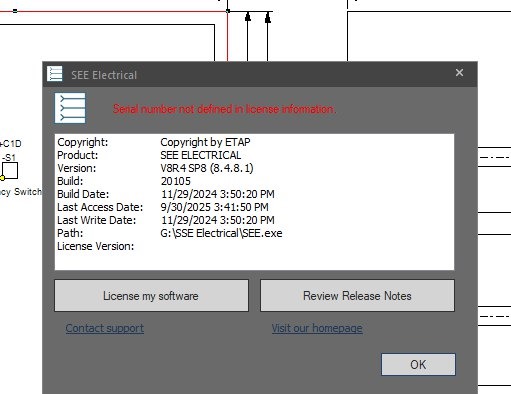Summary
In the world of engineering, the demand for reliable, precise, and automated electrical design solutions has never been greater. Companies and professionals are consistently looking for platforms that reduce manual errors, increase efficiency, and support the development of modern infrastructure projects. ETAP SEE Electrical stands out as a combined approach where ETAP, known for its advanced power system analysis software, and SEE Electrical, designed for schematic design and project documentation, provide a comprehensive toolkit. Together, they support engineers in planning, modeling, simulating, and documenting electrical systems across industries such as energy, utilities, transportation, and construction.
The Role of Electrical Design Software
Electrical design software plays a vital role in modern engineering projects. Without it, engineers would spend countless hours drafting diagrams, correcting repetitive errors, and verifying safety and compliance. Tools like ETAP SEE Electrical make it possible to create digital models that accurately represent physical systems. These platforms do not just produce drawings but also validate them against real-world conditions through simulations and automated error checking. This reduces the risks of equipment failure, improves system reliability, and ensures compliance with both international and local standards.
Understanding ETAP Software
ETAP is recognized globally as a leader in power system design, simulation, and real-time operational intelligence. It offers features such as load flow analysis, short-circuit studies, transient stability assessment, and arc flash hazard analysis. Engineers rely on ETAP to model complex power systems and run simulations before implementation, saving both cost and time. Its advanced modules enable fault analysis, grid compliance checking, and predictive maintenance planning, which are essential for industries dealing with high-voltage networks and mission-critical facilities.
Exploring SEE Electrical
SEE Electrical, developed by IGE+XAO, is a powerful software solution specifically designed for electrical schematic design and project documentation. It provides engineers with tools to create wiring diagrams, panel layouts, and circuit schematics with ease. Unlike generic CAD tools, SEE Electrical is tailored to the unique requirements of electrical engineering, which includes intelligent symbol libraries, automated cross-referencing, and error detection. It simplifies the process of creating professional documentation while ensuring accuracy and compliance with electrical standards.
Advantages of SEE Electrical
SEE Electrical stands out because of its intuitive interface and scalable options that cater to beginners as well as expert engineers. Its features include real-time consistency checks, automatic numbering of components, and advanced reporting options that make project management smoother. It supports collaboration by enabling multiple engineers to work on the same project simultaneously, reducing delays and communication gaps. Moreover, its compatibility with industry standards makes it easier to integrate into existing workflows without requiring major adjustments.
ETAP SEE Electrical Integration
When ETAP and SEE Electrical are combined, they form a robust platform that covers both the analytical and schematic aspects of electrical engineering. ETAP provides the analytical backbone with its simulation and modeling capabilities, while SEE Electrical ensures accurate schematics and documentation. This integration results in a powerful end-to-end solution where engineers can design systems, validate their performance, and produce detailed documentation within the same ecosystem.
Streamlined Workflows
The integration between ETAP and SEE Electrical allows workflows to become streamlined and more efficient. For instance, engineers can create a schematic in SEE Electrical and then export the data into ETAP for performance analysis. After running simulations and making adjustments in ETAP, the changes can be reflected back into the schematic environment of SEE Electrical. This two-way communication saves time, reduces manual input, and ensures design consistency throughout the project lifecycle.
Applications Across Industries
ETAP SEE Electrical is not limited to a single field but finds use across multiple industries. In power generation and transmission, it ensures that networks are designed safely and operate under optimal conditions. In construction and building services, it helps design reliable electrical installations for commercial and residential buildings. In transportation, it supports the development of safe electrical systems for rail, aviation, and automotive applications. The ability to simulate and document complex systems makes it invaluable for industries where reliability and compliance are non-negotiable.
Energy and Utilities Sector
Within the energy and utilities sector, ETAP SEE Electrical plays a critical role in designing power grids that can handle fluctuating demands. Engineers can test various load scenarios, analyze fault conditions, and ensure system stability during emergencies. SEE Electrical ensures that documentation for such projects is clear, accurate, and compliant with regulations, which is vital for both maintenance and auditing purposes.
Industrial Automation
In the field of industrial automation, ETAP SEE Electrical assists in designing control panels, motor circuits, and distribution systems that must function with high precision. The software ensures that all wiring diagrams, component layouts, and safety mechanisms are accounted for, reducing the chances of downtime or accidents in industrial plants.
Advanced Simulation Tools
ETAP’s advanced simulation tools are highly beneficial when predicting how a system will behave under extreme conditions such as short circuits, sudden load changes, or equipment failures. These simulations allow engineers to prepare contingency plans and design systems that can withstand such challenges. When paired with SEE Electrical’s accurate schematic diagrams, these simulations ensure that the final design is both practical and safe.
The Future of ETAP SEE Electrical
As industries continue to embrace digital transformation, the demand for integrated electrical design and simulation platforms like ETAP SEE Electrical will only grow. With the rise of renewable energy, smart grids, and Industry 4.0 technologies, electrical systems are becoming more complex and interconnected. ETAP SEE Electrical is well-positioned to meet these challenges by offering scalable solutions that adapt to future technologies.
Embracing Digital Twins and AI
The future will see ETAP SEE Electrical adopting technologies such as digital twins and artificial intelligence to further enhance system performance and predictive analysis. Digital twins will allow real-time synchronization between physical systems and their virtual counterparts, while AI will automate routine tasks and provide intelligent recommendations. This will enable engineers to focus more on innovation and less on repetitive tasks.


